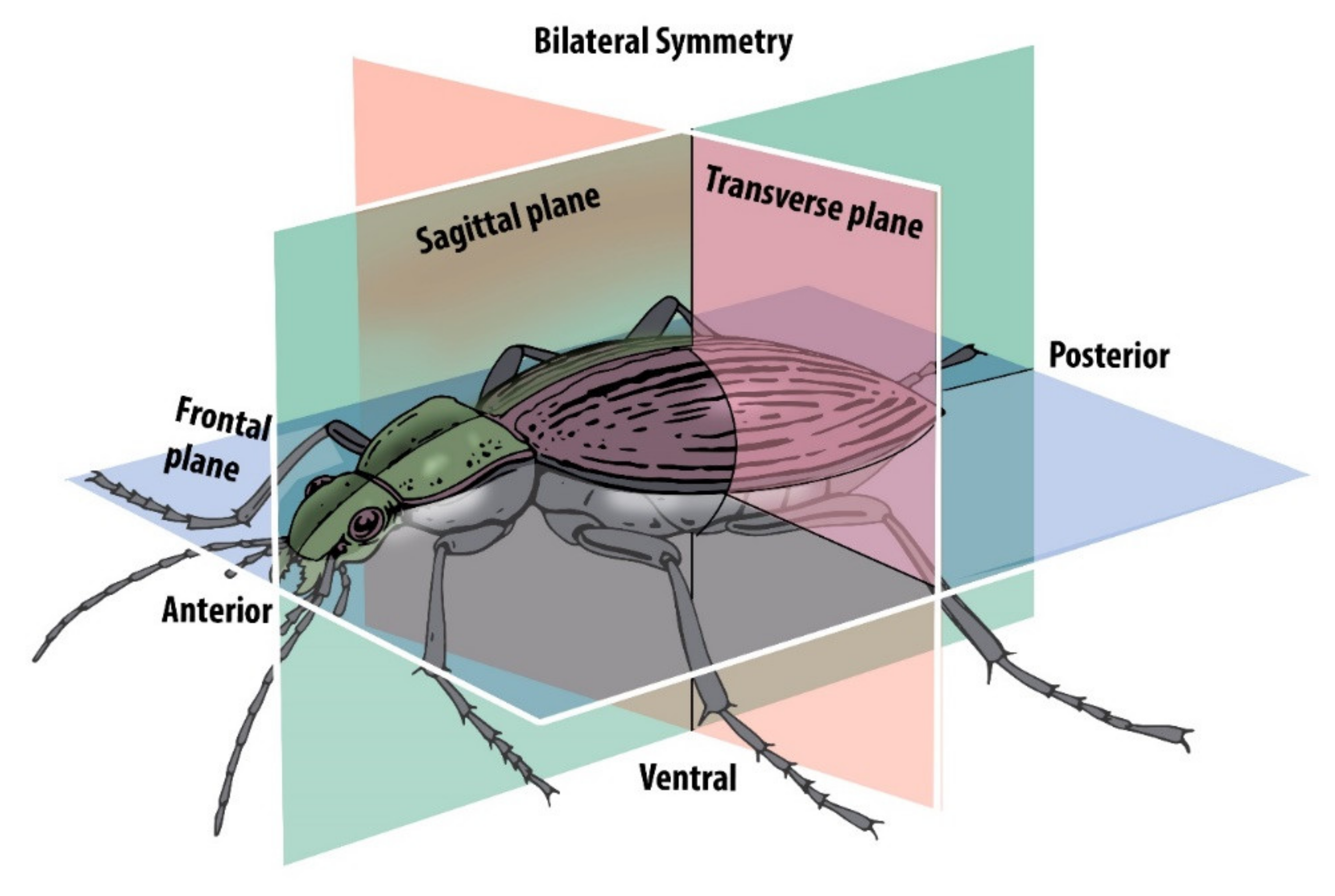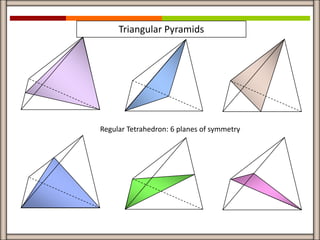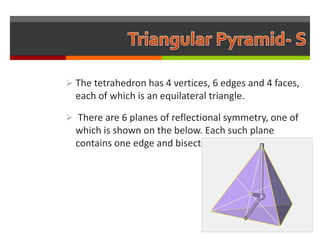What Planes of Symmetry Are Used to Describe Humans
Symmetry Notation Spectroscopists use Schoenflies notation to describe symmetry eg. A plane that divides the body into equal right and left portions.
The two steps of processing include.

. Animals with bilateral symmetry have a head and tail anterior vs. Frontal Plane or Coronal Plane. The study of symmetry can be as elementary or as advanced as one wishes.
If you think so take this. Sagittal Planes Midsagittal and Parasagittal A sagittal plane runs vertically from top to bottom and front to back and it divides the body into a left and right portion. Square Rectangle Irregular Quadrilateral 4 Lines of Symmetry 2.
Imagine a vertical plane that. Planes such as the Sagittal plane frontal plane and cross-section planes help in dividing the vertebrates. The ___________ is the imaginary line traveling through the center of the body from the head to the feet.
A plane that divides the body from front and back. All true animals except those with radial symmetry are. That is a transformation of the plane that carries any directioned lines to lines and preserves many different distancesIf one has a pattern in the plane the.
A Triangle can have 3 or 1 or no lines of symmetry. Is determined by minimizing the symmetry value over all possible reflection planes using a gradient descent algorithm to efficiently locate the plane of maximal symmetry. People tend to use the presence of symmetry in a phenomenon to simplify a model of it.
The sagittal planes which are parallel to the median plane. Ventral and right and left sides. For example in physics systems with certain symmetries are the easiest to model eg an infinite plane an infinitely long cylinder a sphere etc.
This is termed secondary radial symmetry. Humans from such observations developed planes and understood the need for symmetry in their design. Any object that consists of two halves that are mirror images of each other is said to possess a.
Planes and directions of the human body quiz. C 2v D 4h Crystallographers use Hermann-Mauguin notation International notation Was introduced by Carl Hermann in 1928 modified by Charles-Victor Mauguin in 1931 Adopted for the 1935 edition of the International Tables for Crystallography. For example a human nose a fork a baseball bat and a basketball all possess mirror planes neglecting small.
Pute the plane of symmetry for 3D meshes of the human head and face through learning. The median plane which divides the body into left and right. The coronal plane or frontal plane divides the body into dorsal and ventral portions whereas the transverse plane or axial plane divides the body into cranial and caudal portions.
1 landmark-related region detection and 2 sym-metry plane computation in the learning stage which uses the landmarks and the standard symmetry planes identi ed by medical experts for training. The transverse plane is parallel in an upright human and perpendicular to the median and coronal plane. This plane is known as the X-Z plane or axial plane.
The bilaterally symmetrical human body can be divided by several planes. 3 Lines of Symmetry 1 Line of Symmetry No Lines of Symmetry Quadrilaterals Different types of Quadrilaterals a 4-sided plane shape. Body planes are used to describe anatomical motion in the X-Y-Z coordinate system that the body moves through.
In bilateral symmetry the body parts are arranged in such a way that the animal is divisible into roughly mirror image halves through one plane mid sagittal plane only Fig. For example one can simply locate the symmetries of designs and patterns or one use symmetry groups as a comprehensible way to introduce students to the abstract approach of modern mathematics. Animals in the phylum Echinodermata such as sea stars sand dollars and sea urchins display radial symmetry as adults but their larval stages exhibit bilateral symmetry.
Answer 1 of 5. Take up the quiz below and get to see just how much you understood about. Median or Midsagittal Plane.
The planes can then be used to identify and locate the positions of the patients internal organs. Bilateral animals including humans are more or less symmetric with respect to the sagittal plane which divides the body into left and right halves. However noise and digi-tization errors create convergence problems that require a coarse-to-fine estimation of symmetry from low to high resolution images.
Anatomical position is a standard point of reference for the anatomical planes. Mathematicians Reveal Secrets Of The Ancient And Universal Art Of Symmetry. It divides the head superior and tail inferior portions of the human body.
Anatomical terms describe structures with relation to four main anatomical planes. Now a new book by. Individual organs can also be divided by planes to help identify smaller structures within that organ.
Posterior front and back dorsal vs. This is easy to remember because on your skull you have whats called a sagittal. This passes through the head spinal cord navel and in many animals the tail.
Bilateral symmetry involves the division of the animal through a sagittal plane resulting in two mirror image right and left halves such as those of a butterfly d crab or human body. Sagittal plane that divides the body into unequal right and left regions. If it divides the plane from the middle then it is called a midsagittal plane.
In biology the notion of symmetry is mostly used explicitly to describe body shapes. The organs are arranged radially and the body can be divided into two by a mid-longitudinal plane. Humans have used symmetrical patterns for thousands of years in both functional and decorative ways.
Sagittal plane that divides the body into equal right and left regions. So symmetry is indeed needed its an evolutionary must. Ctenophores exhibit biradial symmetry.
The aim of this study was to determine if there are clinical differences between three-dimensional 3D cephalometric midsagittal planes used to describe craniofacial asymmetry and a true symmetry plane derived from a morphometric method. A plane symmetry is a symmetry of a pattern in the Euclidean plane. One plane is horizontal transverse and the oblique planes are all the odd angles in between the horizontal and vertical angles.
The frontal plane also called the coronal plane which divides the body into front and back. Superior and inferior planes describe parts of the body relative to anatomical position. The body is divided into different planes.
Morphometric methods are used in biology to study object symmetry in living organisms and to determine the true plane of symmetry. Concerning the ground it runs parallel thats why it is called a horizontal plane. Students are fascinated by concrete examples of symmetry in nature and in art.

Symmetry Free Full Text Breaking Symmetry Fluctuating Asymmetry And Geometric Morphometrics As Tools For Evaluating Developmental Instability Under Diverse Agroecosystems Html



Comments
Post a Comment